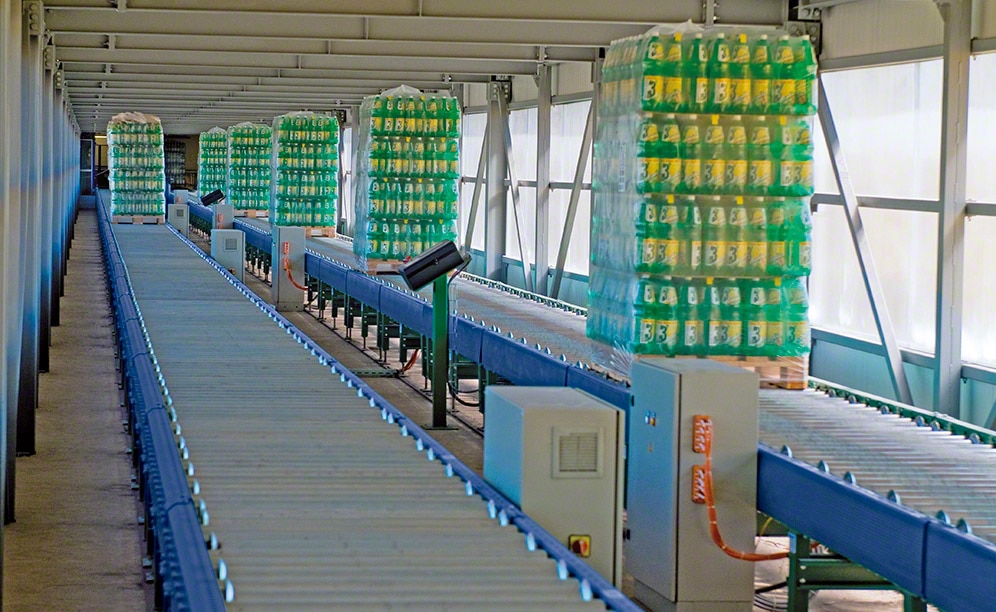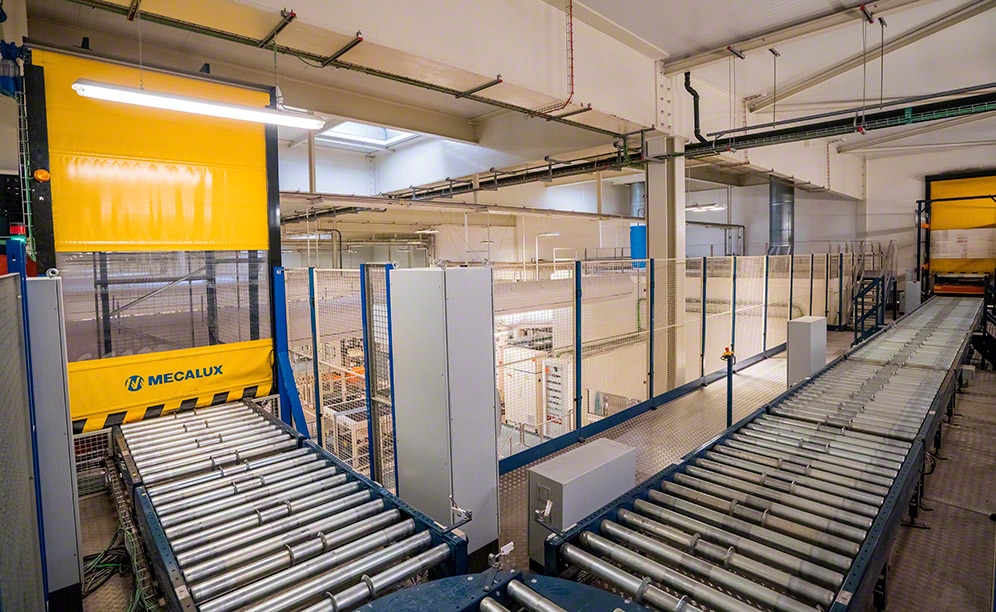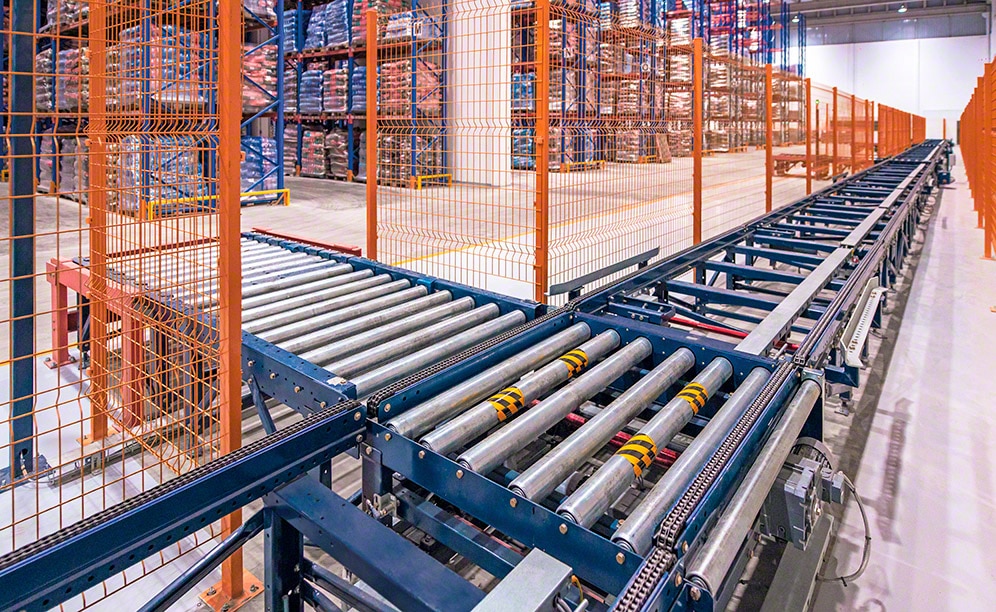Operations involving repetitive pallet movements make up the bulk of the costs and time of the personnel working in a warehouse. Installing an automatic conveyor circuit is a good solution to reduce business overhead, since it eliminates traditional handling equipment used by operators. As such, it ends up being a fantastic option for companies from any sector that wish to speed up their logistics operations.

Pallet conveyors are material handling equipment that transport, accumulate and/or distribute goods to specific positions required by the logistics operations of a warehouse, a production center or between the two. They are comprised of motorized chain or roller beds that move loads in a controlled, continuous manner.
Even though conveyors are generally associated with highly automated installations, in reality, they are more and more common in standard warehouses. The reason is they boost warehouse productivity by optimizing the flow of goods, reduce loading, unloading and transport times, as well as ensure a constant stream of products.
The advantages of conveyors
Pallet movements (most notably in warehouses of a certain size and with long distances to cross) take up much of the operators’ time. In turn, this means the uninterrupted running of handling equipment, which results in a higher risk of accidents. To fix this situation, automatic conveyors substitute the traditional handling equipment and operators, which can be reassigned to other labors. Consequently, manual handling of loads lessens, incrementing the safety in the installation.
To diminish the risk of accidents, conveyors include mechanical elements (for example, channellers or bumpers that direct the unit loads) or electronic ones (sensors or variable-frequency drives that ensure unit loads are pushed along gently).
Meanwhile, conveyors are compatible with standard handling vehicles (like forklifts and pallets trucks) and can move non-standard or poor-quality pallets. To this end, they must use slave pallets or specific solutions.
Efficient transport system
One of the greatest advantages of conveyors is they can be assembled in an infinite number of different circuits, from simple short circuit to more complex ones, which connect different zones, floors or buildings, and even include various operations.

From that point, a large number of elements and components can be appended to mold the circuits to the features and requirements of the warehouse, as well as to level out uneven sections. Conveyors provide many possibilities and uses:
- Acting as cross-docking buffers for products that do not require storing.
- Forming stretch wrapping circuits.
- Creating order consolidation channels.
- Carrying out pre-assembly tasks, etc.
It is possible to design customised circuits that are speedy and profitable for all sorts of warehouses and factories. These are tailored to the strictest pallet transport requirements, in situations like:
Connecting the warehouse to production
One of the most repetitive warehouse operations includes moving pallets to storage areas and from these to the docks or other production centers.
Then again, conveyors can connect distinct areas to the production center. They take the merchandise to positions where orders are prepared or where these run through a set of quality controls.
On the other hand, they are utilized to join the production center to the warehouse. They can be directly connected to the production line exit points and to the verification and quality control zone. As this system requires minimal operator intervention, it removes any sort of error originating from manual management.

Conveyors are a transport system that yields maximum efficiency in unit load input, dispatch and handling processes
Connecting different zone inside a warehouse
Sometimes, these must connect two or more areas inside the same sectored warehouse. Sectoring is often done for various reasons: to fulfill safety regulations, sort products by their characteristics, organize operations or avoid temperature changes (as in frozen storage chambers).
The automated conveyor circuit is the main artery of the installation that links all these zones. With this system, repetitive motions are removed and conflicts with the other operations carried out in the warehouse are eliminated.
One of the most critical zones in a warehouse is the one for picking. The conveyor circuit is a good solution for quickly provisioning this area. It is possible to include a stacking machine and an empty pallet dispenser to speed up this operation.









